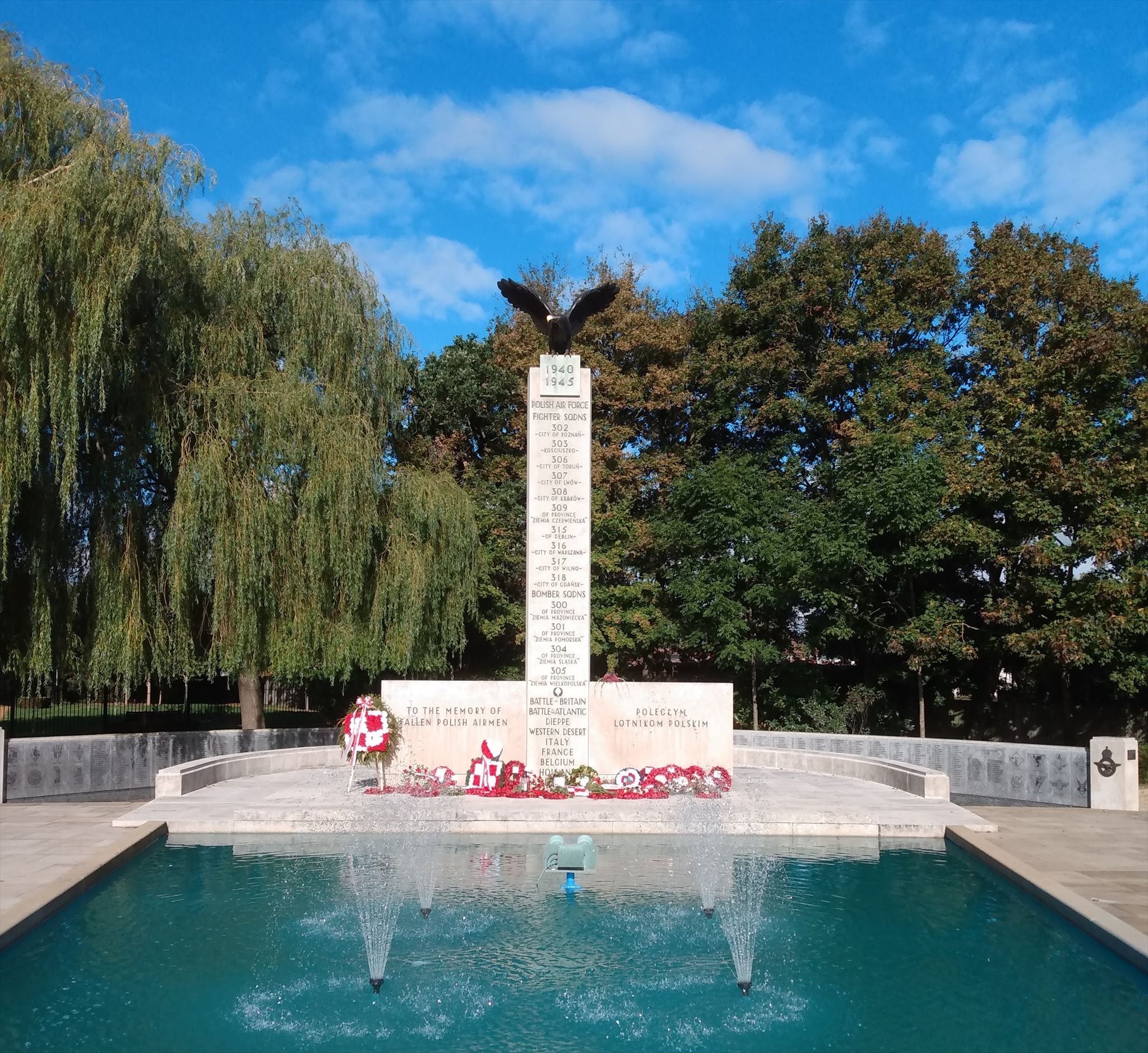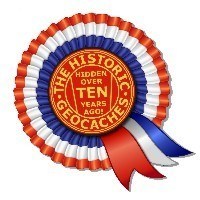The structure which remembers the 2,165 Polish airmen killed during World War II is the work of the surviving comrades who sought to build the memorial soon after the armistice in 1945.
A set of small iron gates lead to a needle of Portland stone fronted by a shallow pond and flanked by two low walls. On top of the central column is a bronze eagle, symbol of the Polish air force, and to the rear a sunken half moon walkway is inscribed with the names of the fallen as well the insignia of long disbanded squadrons.

In 1939 the Polish air force was in disarray as the German blitzkrieg scattered flyers across Europe. Initially they re-grouped in Romania, then France but after Dunkirk those that could escape, retreated to England. Once there the Poles received a somewhat cool welcome despite the dire circumstances facing British forces. The RAF refused to recognise the independence of the Polish and chose to send the experienced pilots on procedural and language courses at various training centres. Once there the disgruntled Poles had to wear British uniforms and swear allegiance to the King.
During the Battle of Britain and from August 1940, the airmen flew as a sovereign force with their own insignia and kit. In that same month the first two operational Polish squadrons took to the air and eventually 145 Polish pilots defended British skies. Of all the units operating, including the RAF, the No.303 "Kosciuszko" squadron was the most successful, recording 126 kills. Among its ranks was Josef Frantisek, a Czech national, who chose to join the Polish air force after the fall of Prague in 1939. In just three weeks during October 1940 he recorded 17 confirmed kills and one probable making him the top allied pilot during Battle of Britain. Overall this squadron, accounting for just 5% of the available pilots, secured 12% of the total victories in the dog-fights over Britain. Clearly a great deal was accomplished by very few. Polish units continued to fly throughout the war and ranks were swelled by expat arrivals from the Americas and, following the Russian entry into the war, from Soviet labour camps. By the end of hostilities there were 17,000 men and women serving in 15 RAF Polish squadrons. The flyers were well known for a bravery that often verged on the reckless but their passion was that of people whose homeland had been occupied. This was clearly recognised by ordinary British people as most of the money raised to build the Polish memorial was collected from public donations.
Victory in Europe came at a heavy political price; many Poles were unable to return to a country under communist control. During the unveiling of the memorial in November 1948 Viscount Portal of Hungerford, noted the plight of the veterans but added that it would be to the advantage of British people if the Poles made their homes in the UK.
The stated co-ordinates are the main entrance gates to the memorial ground. On entering the memorial grounds proceed to the right hand side of the memorial and the sunken area at the back where the names of all the airmen who lost their lives are listed in alphabetical order.
You will need to find and note down
1. The surname of the first airman listed
2. The surname of the last airman listed
3. The surname of the first airman listed in the French Campaign 1940
4. The surname of the last airman in the first column of the French Campaign 1940
Using the formula A=1, B=2 ….. Z=26 you need to find the values of @, #, £, ?, $, * and %
@ = (3rd letter of surname of the last airmen listed) plus (last letter of the last airman in the first column of the French Campaign 1940)
# = (6th letter of last airman in the first column of the French Campaign 1940) minus (4th letter of the surname of the first airman listed)
£ = (2nd letter of the surname of the first airman listed in the French Campaign 1940) minus (6th letter of the surname of the first airman listed)
? = 4th letter of the surname of the last airman listed
$ = 2nd letter of the surname of the last airman in the first column of the French Campaign 1940
* = (4th letter of the surname of the last airman in the first column of the French Campaign 1940) plus (7th letter of the surname of the last airman in the first column of the French Campaign 1940)
% = (4th letter of the surname of the airman in the first column of the French Campaign 1940) minus (last letter of the surname of the last airman in the first column of the French Campaign 1940)
The cache is located at N 51 @ . ? % % and W000 (# minus $) . ? (£ minus $) *
Depending upon the time of day of your visit the headline coordinates and once you have calculetd the actual coordinates of the cache, you will need to cross a busy road, I strongly recommend you use the pedestrian crossing at N51 33.015 W000 24.050
***** PLEASE NOTE IMPORTANT *****
CACHES ARE NOT ALLOWED TO BE PLACED ON ACTUAL MEMORIALS OR WITHIN THE BOUNDARY OF SUCH
AT ALL TIMES PLEASE TREAT LOCATIONS OF MEMORIALS WITH RESPECT

To read more about The Historic Geocaches' campaign click here